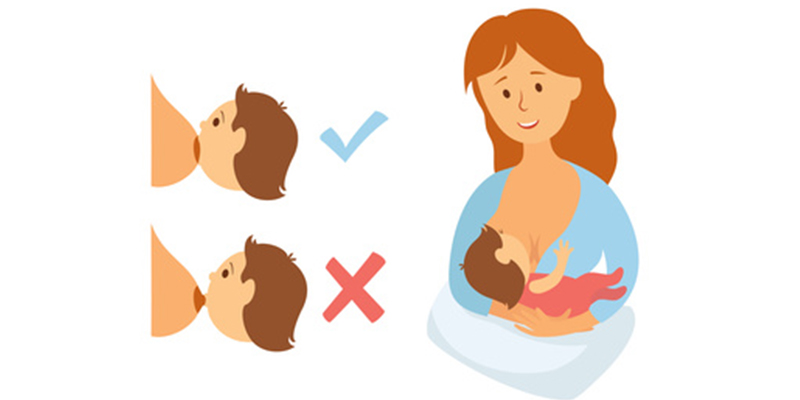It is such a joy to observe an infant’s responses to the world. As you watch your newborn gaze in wonder at the people and objects around him, nestle against you with a whimper of pleasure, and occasionally startle in response to a loud noise, you may feel that you’re experiencing many of the wide range of emotions yourself. During the first days and weeks at home with a new baby, you may swing between feelings of joy and uncertainty, confidence and confusion, excitement and exasperation. These are all very natural and expected feelings. If your emotional responses during the postpartum period are more extreme than you expected or feel you can handle, you should notify your physician. In general, the simpler and more predictable you can keep your daily routine as you continue getting to know your baby and familiarizing yourself with breastfeeding, the better for you and your family.
Though one of the great advantages of breastfeeding is its adaptability—you can feed your baby practically anywhere without equipment and without delay—you might find that choosing one or two favorite places for breastfeeding at first will make your adjustment easier. During the day, you might opt for a sofa or chair in the living room or kitchen, since this allows you to take part in family life as you nurse. Some new mothers find that breastfeeding in bed, with plenty of pillows for support and their baby’s bassinet waiting close by, allows the baby to drift off comfortably to sleep at the end of the nursing session and makes it easier for the mother to nap.
Nursing mothers in many cultures sleep with their babies until they wean. The American Academy of Pediatrics, however, has expressed concern that bed sharing is hazardous. Bed sharing is a particular concern if the mother is obese; if she is using any substances that may alter her state of arousal, such as mind-altering drugs or excessive alcohol; if she is a smoker; or if other children are also in the bed. If you decide to let your infant sleep in your bed, never place him in a facedown position. Always place him on his back. Avoid soft surfaces, loose pillows, or loose covers, and move the bed away from the wall and other furniture to keep your baby from becoming trapped. Never put your baby to sleep on a waterbed. Consider moving him to his bassinet, on his back, after breastfeeding and before you drift off to sleep. It is also risky to fall asleep with your infant on a couch or in a reclining chair. The American Academy of Pediatrics recommends parents have their new babies sleep in the same room as the parents, but on a separate sleep surface, such as a bassinet.
Once you’ve picked a couple of locations for breastfeeding, make sure that such essentials as baby wipes and diapers are within reach before you start nursing. Keep a bottle of water or something else to drink nearby for you, as nursing mothers should drink plenty of water or other noncaffeinated beverages to avoid thirst.
If you have older children, a basket of toys, workbooks, or audio recordings can keep you from having to get up in the middle of a breastfeeding session. You might also keep a pad and pencil within reach to track your baby’s feedings. Finally, while studies have shown that eye contact and other communication during feedings benefit your infant’s brain development (and is rewarding for you too), you may want to keep a book, magazine, or the television remote control within reach for those times when he falls asleep in your arms. Of course, you won’t necessarily need every one of these items, nor do you need to create a formal “nursing area” to breastfeed successfully, but thinking ahead about what you might want nearby can make life more manageable in the early days.
Last Updated 11/2/2009
Source New Mother’s Guide to Breastfeeding, 2nd Edition (Copyright © 2011 American Academy of Pediatrics)
The information contained on this Web site should not be used as a substitute for the medical care and advice of your pediatrician. There may be variations in treatment that your pediatrician may recommend based on individual facts and circumstances.







